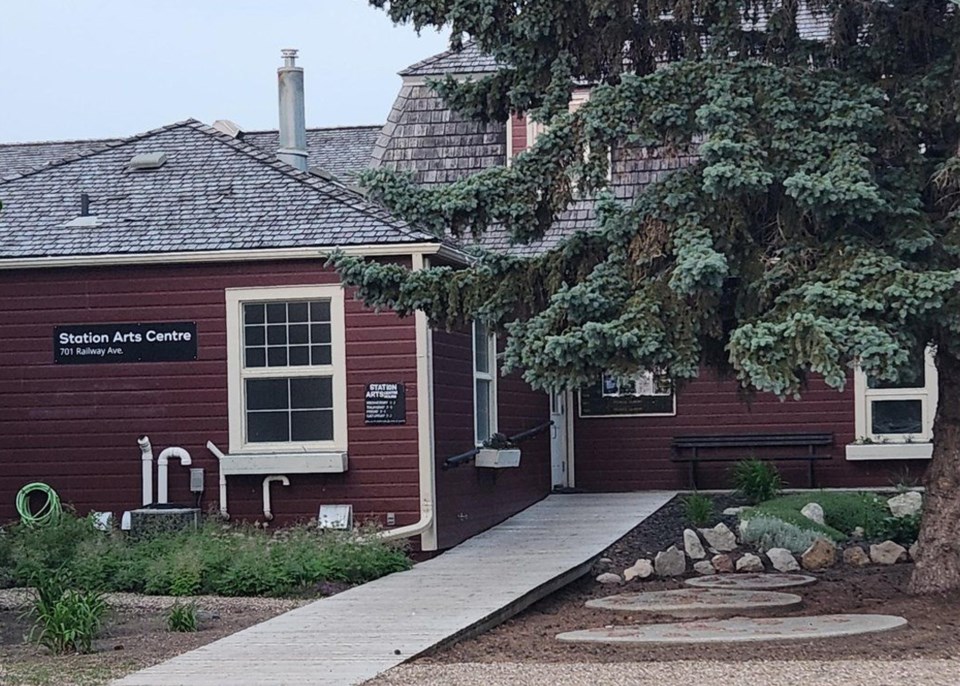ROSTHERN — Garden Alchemy conjures up all sorts of images, but there is nothing magical about the workshops 小蓝视频 hosted at the Station Arts Centre in Rosthern this summer. Offered on multiple days throughout July and August, participants will learn about forgotten railway gardens, create their own herb-infused simple syrup, and experiment with botanical prints. Promoted as “perfect for day-trippers, entertaining friends and family from out of town or a summer escape close to home” this is an opportunity to “experience the Station Arts Centre’s bounty and create something amazing!”
Alchemy is defined as a power or process that changes or transforms something in a mysterious or impressive way or an inexplicable or mysterious transmuting. Thus, garden alchemy is an adequate description of the idea behind the railway gardens. As the CPR was the main conveyance bringing settlers to the West, the federal government decided to bring symbols of Eastern and European civilization to the West. Since railway stations were important points of entry for immigrants, the federal government, together with the railway felt it was important to plant beautiful gardens to make a good first impression. B.M. Winegar, a representative of the CPR, expressed this view in 1921 when he stated, “For the traveller who spends many weary hours on a transcontinental train the sight of a garden is joy. He appreciates our efforts and his ideas of the town he goes through many times are influenced by the appearance of the station and its grounds. Later on, he will say, ‘I remember that town, there must be a fine spirit there, t he station was neat and the little garden was well kept, and the surroundings attractive.”
According to researchers, gardens represented success and civilization to immigrants of the period. 小蓝视频ern Saskatchewan’s vast, flat, and largely treeless expanses must have appeared decidedly foreign and bleak to those arriving from the lush landscapes of the United Kingdom, and the sudden appearance of a beautifully designed and maintained garden in the ‘midst of nowhere’ must have indeed seemed mysterious and magical. Railway gardens were a cheap way to help motivate travellers to settle in Western Canada and passengers were taken aback by the beautiful garden beds that surrounded the stations.
The first railway gardens were planted in the late 1890s and by the 1920s most of the principal stations in Canada had one. Typical railway gardens welcomed arriving travellers with carefully designed layouts containing willow trees, rock gardens, and flower beds, which in the earliest days were created and maintained by CPR employees who volunteered their time. First built to convince pioneers to explore the vast wilderness of western Canada, the beautification experiment became a distinguishing feature of major stations and led to the development of the Canadian Pacific Railway Horticulture Department. By 1907, the company had established two early nurseries — one at Springfield, Manitoba devoted to ornamental production, and another at Wolseley, Saskatchewan for the propagation of trees, shrubs, and perennials. In 1908, the company organized a forestry department to administer its parks and gardens and to advise officials in the planting of railway gardens and windbreaks along its rail lines.
Railway gardens in Saskatchewan could be found at Kennedy, Moosomin, Windthorst, Broadview, Sintaluta, Indian Head, Regina, Moose Jaw, Herbert, and Saskatoon. Unfortunately, after the Second World War, the gardens disappeared as people travelled more by car and airplane and railways did not have the same status as a point of entry as they once did. There was no longer a need to make a “good first impression” for immigrants coming to the wide-open prairies and sadly the gardens mostly became parking lots.
To learn more about the railway gardens and other aspects of botany check out the Station Arts website for information regarding the dates of the Garden Alchemy workshops.
This article has been corrected to indicate the Station Arts Centre is located in Rosthern, not Wakaw, as stated in the original story.



